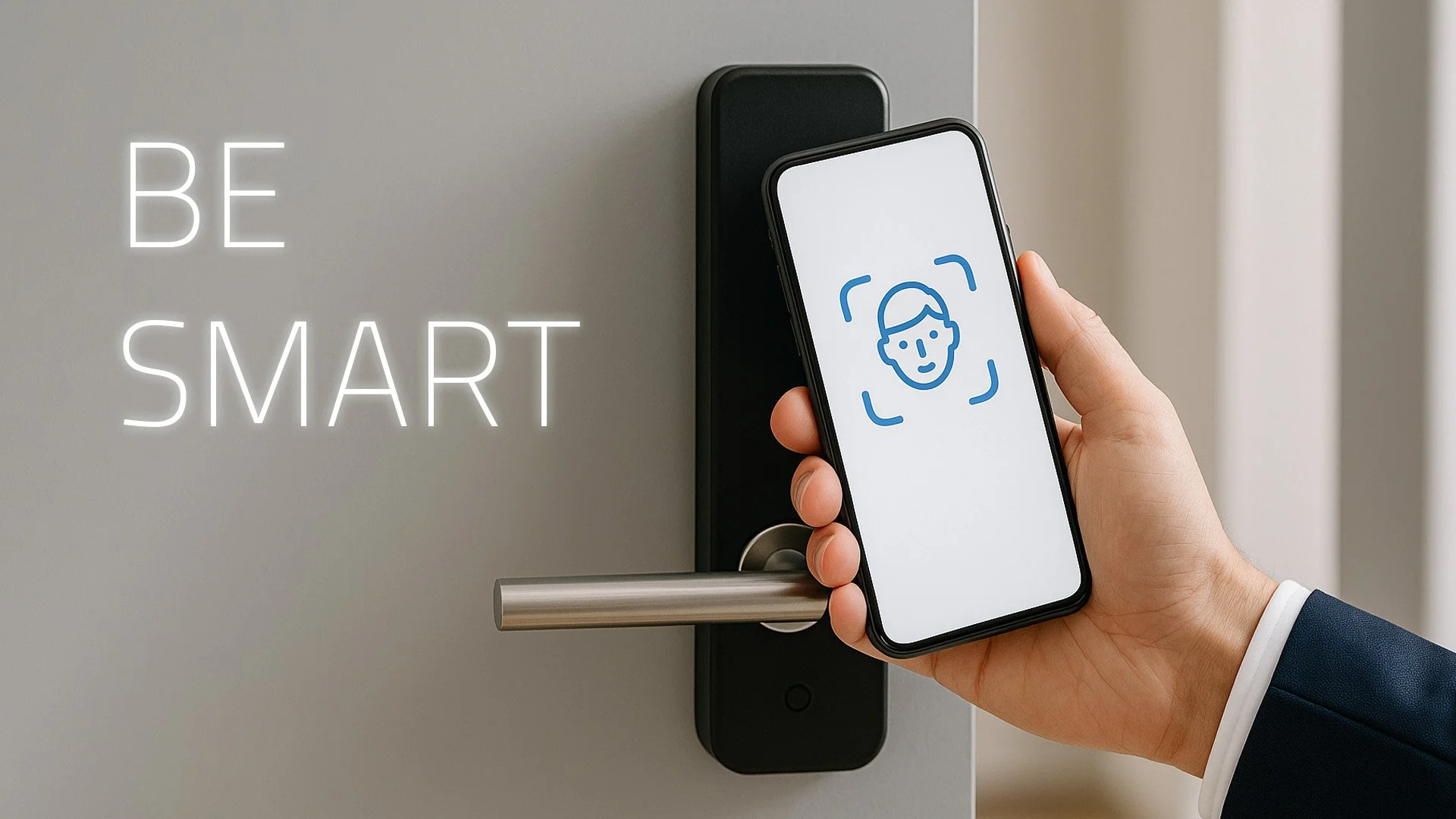From Facial Recognition to Smart Locks
Innovation, Design, and Cultural Acceptance
In recent days, facial recognition has re-emerged as a central issue in Italy's political debate on short-term rentals. A recent interview with Gianluca Caramanna, tourism representative of Fratelli d’Italia and advisor to Minister Daniela Santanché, brought the topic back into focus.
“Forget keyboxes — facial recognition is safer, more traceable, and aligned with modern needs,” said Caramanna in an interview with HuffPost.
The proposal aims to phase out traditional self check-in methods like key safes and numeric codes, replacing them with more advanced biometric systems. The intent: enhance guest identity control, reduce misuse, and promote security and traceability.
This isn’t the first time the matter has sparked public discourse. In November 2024, Italy’s Ministry of the Interior issued a circular banning unattended access systems — a move that faced heavy criticism from hospitality operators and rental hosts. The reason? Ensuring physical identity verification. But for many, the restriction clashed with the sector’s technological evolution.
In May 2025, the Lazio Regional Administrative Court (TAR) overturned the ban with ruling no. 10210/2025. The verdict validated remote identification, provided it is done through certified and traceable systems. This reopened the path for biometric access — including facial recognition.
Smart Locks as Cultural Objects
In this scenario, talking about smart locks isn’t just a matter of technology — it’s a matter of culture.
In my upcoming book REAL DESIGN, I examine how design mediates between technical efficiency and human acceptance. Smart locks are a perfect case study.
One of the projects I describe was developed for the Asian market with a global mindset. In countries where users already interact naturally with technology, the challenge for design was to build clarity, trust, and belonging — not just functionality.
Asia and Italy: Two Speeds
“In Asia, innovation is often adopted before it is fully understood — as if culture places more trust in efficiency than in tradition.” (REAL DESIGN, 2025)
In China, South Korea, and Singapore, smart locks are a part of everyday life. Homes open with facial recognition, payments happen via QR codes, and cars unlock with smartphone apps. These infrastructures are absorbed quickly and with minimal friction.
In Italy, the situation is different. The key still holds strong symbolic value — control, ownership, gesture. Accepting access via face, fingerprint, or smartphone requires a shift in the deeper meaning of inhabiting a space. That’s why innovation must be translated culturally, not just implemented technically.
Design as Translation and Trust-Building
“An access technology becomes truly smart only when people stop wondering if it's secure — and start feeling it’s familiar.” (REAL DESIGN)
Design in such projects carries a double responsibility: ensure performance and foster acceptance.
Materials, the gesture of use, the sound of unlocking, the glow of an LED — all these elements contribute to trust and familiarity. In the project described in the book, everything from the interface to the outer case was designed to make technology visible but not intrusive, recognizable but not intimidating.
This is what makes a smart lock more than a gadget. It becomes part of life.
Policy Can Lead the Way
Caramanna’s statement, Minister Santanché’s position, and the recent court ruling may signal a policy shift.
Even FIAIP (the Italian Federation of Real Estate Agents), through president Gian Battista Baccarini, welcomed the decision:
“We support the ruling… Technology now enables remote guest identification in a simple and secure way.”
Specialized platforms like Smoobu have also promoted the benefits of remote self check-in, citing global examples like Igloowink — a facial recognition system for vacation rentals.
In countries like Japan and across Scandinavia, self check-in has become the norm in mid- and short-term rental management. The advantages are clear: guests enjoy more autonomy and smoother experiences, while hosts reduce costs, optimize logistics, and increase security.
When well-designed, biometric systems significantly reduce false identities, unauthorized behavior, and legal disputes related to traceability.
Conclusion: Innovation Isn’t Exported — It’s Translated
Beyond legal or political aspects, the key issue is cultural acceptance.
If facial recognition and smart locks are to become common in Italy, it won’t be just because of policy. It will be because designers, engineers, and legislators succeed in making them understandable, trustworthy, and aligned with local values.
Italy has the chance to not only catch up, but to build a conscious transition — blending international best practices with a deeply Italian sensibility about living and inhabiting space.
Because true innovation doesn’t just enter our homes. It enters our minds. And stays.
Sources:

